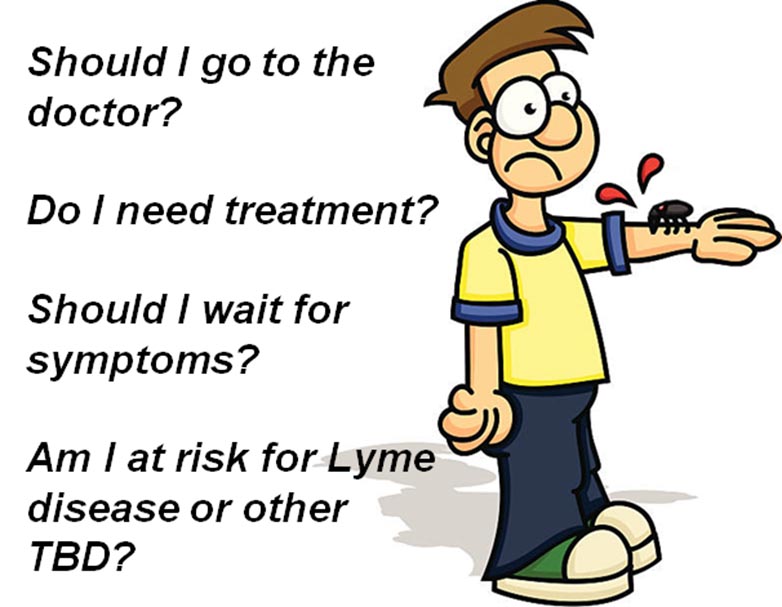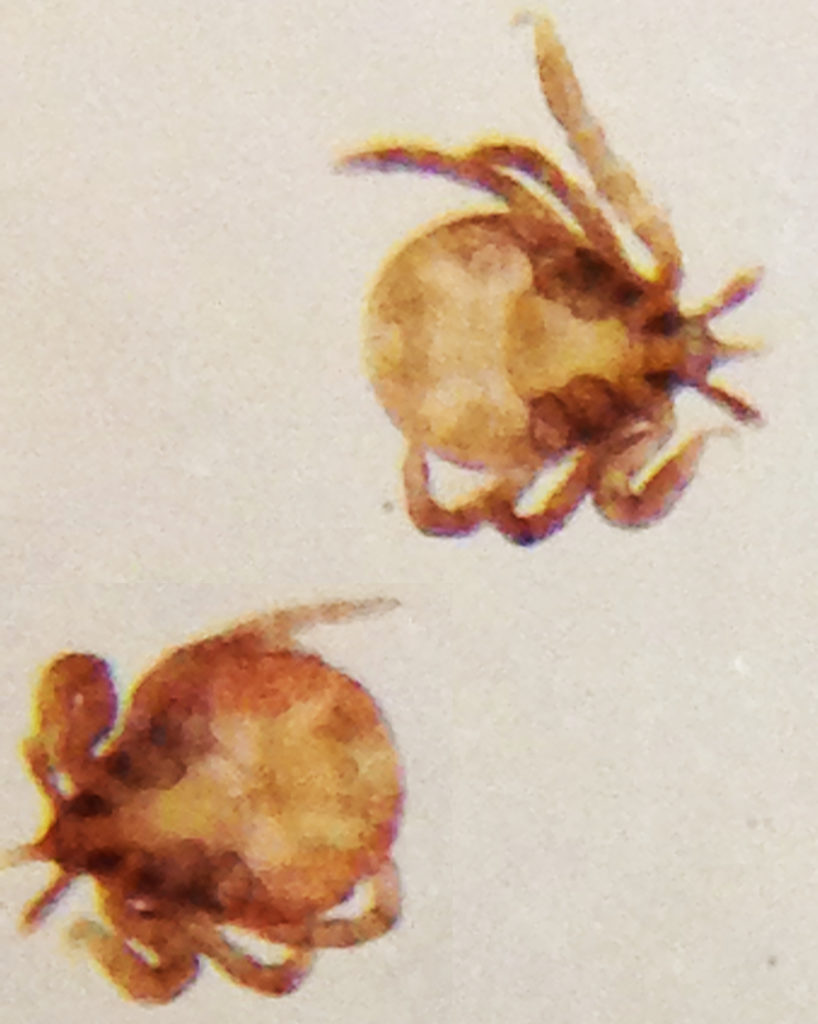Q&A with the CEO
5 reasons you should get your tick tested by TICKNOLOGY
Q&A with Dr. H. Szerlong, Co-founder & CEO
1. How Can Tick Testing Help Me?

A tick bite is a potential source of infection if it is carrying one or more pathogens. Bacteria, protozoa and viruses can be transmitted from the tick to the host through the tick’s saliva while attached. There are more than 15 different tick-borne diseases in the U.S. alone.
“Lyme disease is the most prevalent tick-borne infection in the U.S. and around the world. If not treated early, Lyme disease can cause chronic debilitating illness.”
In general, tick-borne illnesses can be difficult to diagnose as many cause “flu-like” symptoms that can vary from one person to the next. For example, it is believed that only 9% of those infected with Lyme disease develop a bulls-eye rash.
By testing the tick that bit you, not only do you get results about your risk of infection and co-infection (from multiple pathogens), but you also receive an accurate record of the tick species and image to aid in your treatment plan. If you have been bitten by a tick and you are experiencing symptoms, results from a comprehensive tick test panel can help you with important medical decisions and make the most efficient use of your health agencies and your medical costs.
2. How Does the Test Work?
Most tick testing labs use the same basic technology called “PCR” (Polymerase chain reaction). It is a DNA-targeted test that finds a specific pathogen’s DNA sequence and amplifies it in a chain reaction. The two fundamental characteristics of a PCR-based test are (1) locating the molecular “finger-print” of the pathogen, and (2) intensifying a positive signal. These two attributes make PCR tests both extremely accurate (99.9%) and sensitive (down to ~20-50 bacteria). Thousands of ticks have been tested for decades using this technology and the methods are available to the public through scientific journal publications. Importantly, this technology is also relatively inexpensive which is why it should be readily accessible to everyone under all circumstances.
“However, the validity and interpretation of your test is only as good as the scientist behind it. “
I would have a hard time trusting my specimen to anyone without at least 7-10 years of professional laboratory experience and assurance that all results are reviewed and approved by a senior level scientist. An experienced scientist is essential in order to pick up potential subtleties and anomalies that occur in a subset of specimens (see "Special Consideration When Choosing a Tick Testing Lab" below). Misinterpretation of these occurrences can lead to false positive or false negative results. At TICKNOLOGY, we do not leave the interpretation of your results to entry level scientists, students or computerized automation.
3. How do I Choose the Best Test for my Tick?

Not all ticks are the same. Different species of ticks are known to carry different types of bacteria, protozoa and viruses. (See our Tick Identification and pathogen guide here) That being said, the tick-pathogen relationship is constantly changing and new tick-borne infection risks are emerging as tick habitats expand to new regions.
“That is why TICKNOLOGY has developed a 'Universal' tick test . One test panel can be used to detect the most common and treatable tick-borne pathogens associated with the variety of tick species that come in contact with U.S. residents.”
Our centrally located laboratory in Colorado receives ticks from across the U.S. We do not want to bias our tests in such a way that we miss or misinterpret a patient’s risk of infection.
“It is important to us and to patients that we constantly monitor the expansion of tick-borne disease in the U.S.”
To assist in this goal, Marc Dolan, MSc., TICKNOLOGY Co-founder and Medical Entomologist with 20+ years of experience, oversees tick identification and focuses on innovative tick-borne disease prevention technology.
4. How do I get my Tick Tested?
Tick Testing in 3 Easy Steps

Step 1
Save your tick in a plastic bag.

Step 2
Order your test online.

Step 3
Send it to our lab.
SOS! If you or a family member have been bitten by a tick, testing it for Lyme and other tick-borne diseases may aid in immediate medical decisions. It’s easy! Simply, remove and save your tick in a Ziploc bag, order a Universal Tick Test online and then send us your specimen using supplies from home.
Here’s what you can expect from us: You will get a notification email the day your specimen arrives (not the next morning). You will get results emailed to you within 24-72 hr with priority processing and 3-5 days with standard processing. If your tick doesn’t pass our standards, it will be optimized and repeated. If results cannot be obtained a second time, you will get a full refund. *We typically process tests on the weekends.
5. Why isn't Ticknology a University Laboratory?
See our pricing for the Universal Tick Test here
Although I have spent 20+ years in academic research labs. I decided to develop TICKNOLOGY as a private entity. The reason is two-fold. First, we can keep our costs lower than most university labs. University labs are often required to commit to high indirect costs associated with maintaining large facilities, administration costs, personnel, IT support and other costs. Even if a university lab is not-for-profit, these costs (especially salaries) are then passed down to patients and tick testing becomes cost-prohibitive. Second, as a private entity, we can invest our interests toward our broader mission while maintaining exceptional laboratory services to all communities.
"It is our expectation that tick bites will soon be the thing of the past and it is our hope that TICKNOLOGYwill make a significant impact toward the development and implementation of the technology that will get us there!"
Special Consideration When Choosing a Tick Testing Lab:
Make sure your specimen is tested “rigorously”. This means that the integrity of your specimen passes internal control standards and that both positive and negative controls are performed in parallel with your specimen to ensure that the methods are working and that there is no cross-contamination between specimens. At TICKNOLOGY, if your sample doesn’t pass our internal controls, we repeat your test with optimization. If it fails a second time, we issue you a full refund and your results are “inconclusive”. Most often, samples fail due to low specimen quality or exposure to hydrogen peroxide or bleach. To prevent cross-contamination and false negative results, we adhere to the practices taught by the American Society for Clinical Pathology (ASCP) of which I am certified as a Molecular Technologist .
